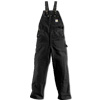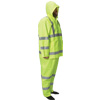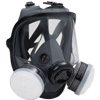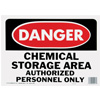Safety Apparel Standards

Occupational Safety and Health Administration (OSHA) requires personal protective equipment (PPE) whenever employees are exposed to possible hazards. Protective garments, coveralls, vests, or shoe covers should be worn as needed to shield employees.
To comply with OSHA standards, safety apparel must be selected based on the potential hazards such as:
- Temperature extremes
- Splashes from chemicals or hot liquids
- Impacts from tools, machinery, or vehicles
- Handling contaminants, pesticides, or hazardous materials
To guard against bodily injury, OSHA requires safety apparel to fit properly, be comfortable to wear, and meet the standards developed by the American National Standards Institute (ANSI).
When to Use PPE and Safety Apparel
Laboratory and medical work often require special lab coats or gowns to protect against contaminations. Many common maintenance tasks also require the use of safety apparel, coveralls, aprons, high-visibility vests, etc. Painting or patching, working outside near roadways/traffic, welding or working near fire/hot liquids, would all require safety garments.
Types of Garments

Employees must be trained on the use of PPE; they should know when to use it, how to properly put it on and take it off, and understand the limits of protections. Safety garments should be properly cared for, maintained, and laundered as needed.
- Coveralls should be used when painting, patching, spraying pesticides, or other liquids.
- Safety vests should be highly visible and be used when working outdoors or near traffic areas.
- Waterproof aprons and garments help protect against liquid or water splashes.
- Fire retardant overalls and coveralls should be provided when work exposes staff to flames or other thermal sources. Flame resistant PPE apparel is designed to create a protective barrier between the heat source and the body.
- Chemical resistant apparel provides vapor and splash protection. OSHA standards outline four levels of chemical protection, A through D. A Personal Protective Equipment rating at Level A offers the highest protection, while D is minimum level.
Shop Safety Apparel
NOTE: This information is a summary interpretation and was prepared as general reference material only. This summary is not authoritative as laws can be amended over time. For specific compliance requirements and updates, please refer to the actual code language and the statute or legal counsel.






